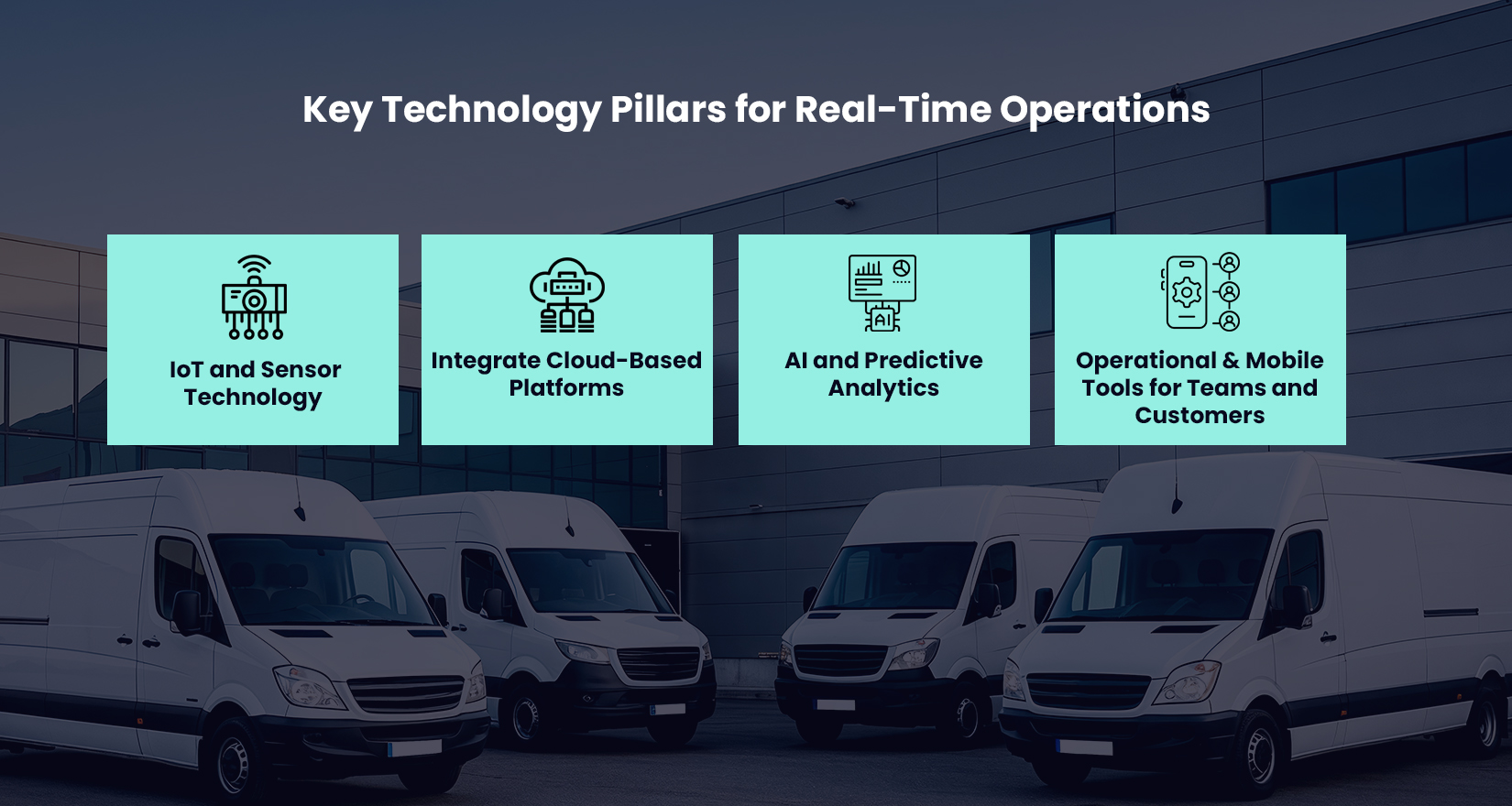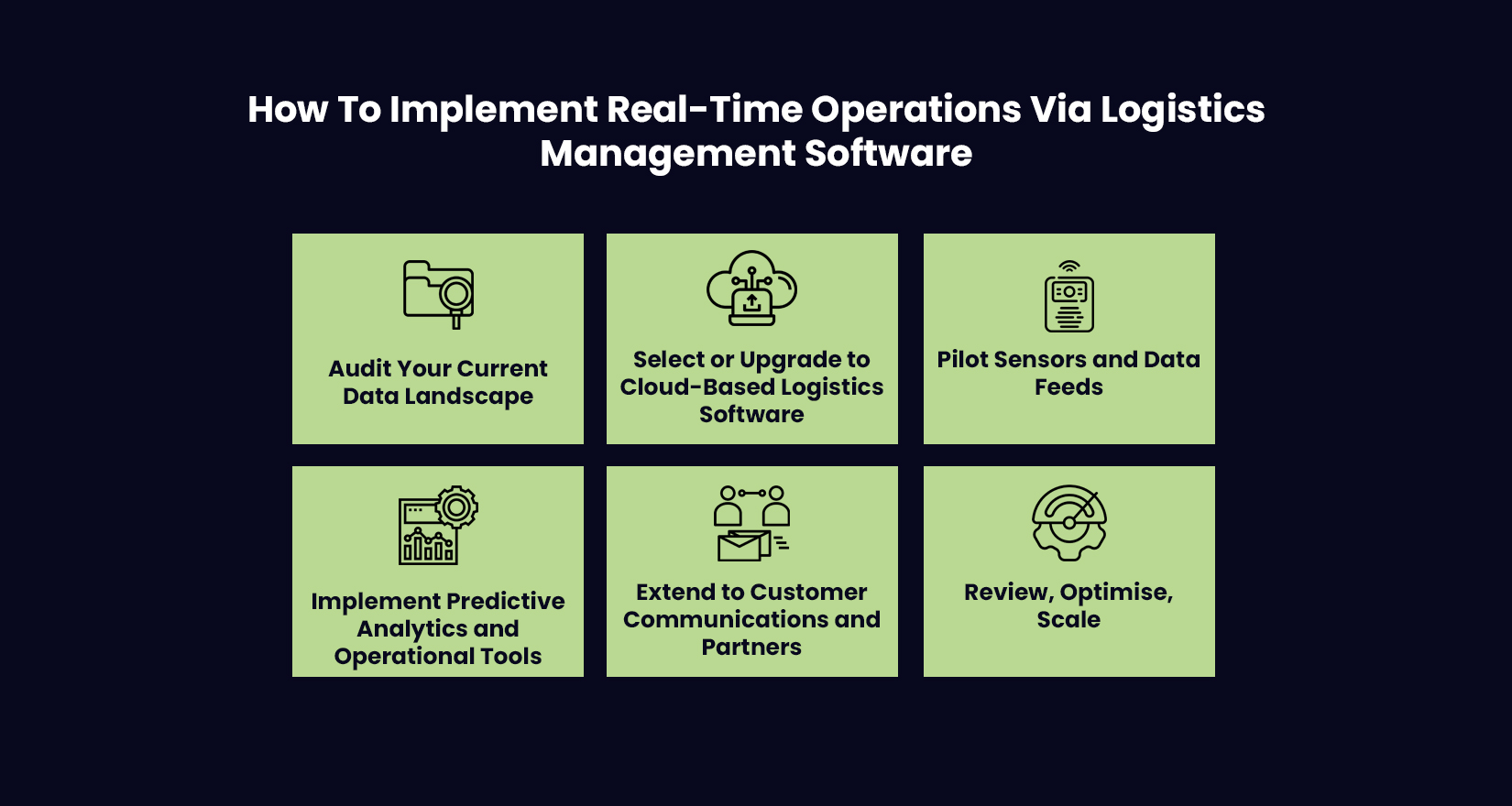
From Reactive to Proactive: Bringing Real-Time Data to Logistics Management
Real-time data has moved from “nice to have” to “must-have” in logistics management. The customers expect speedier, more transparent, and smarter delivery. To any serious competitor in the field, the integration of real-time visibility into the operations of the company is no longer optional but foundational. In this blog, we will look at how companies are able to bring real-time data into their operations. The role of logistic management software and cloud-based logistics software, and the benefits that follow.
Why Real-Time Data Matters in Logistics Management
In logistics management, speed and accuracy count. A delayed truck, a warehouse full of mismatched inventory, or an unknown fault in the supply chain can cost money fast. Real-time data enables:
– Instant tracking of assets-vehicles, cargo, inventory-so you know where things are and what state they’re in.
– Proactive decision-making rather than reactive firefighting.
– Improved customer communication and trust. Since you can tell customers where their goods are, when they will arrive, and warn them of changes.
An article in the industry recently noted that as firms incorporate real-time data into operations, they can change how they run fleets, monitor shipments, and respond to surprises. With the help of advanced logistics management software and cloud-based logistics software, companies unlock the information flows required to make these insights actionable.
Key Technology Pillars for Real-Time Operations

Let’s walk through the four major pillars: IoT and sensors, cloud platforms, AI and predictive analytics, and mobile-operational tools. Each has its place in advanced logistics management.
1. IoT and Sensor Technology:
Sensors are embedded in vehicles, containers, and warehouses-even on pallets. With this companies can track location, temperature, humidity, vibration, and other metrics in real time.
For example:
– GPS trackers report exact positions of vehicles.
– RFID tags or smart labels track inventory through the chain.
– Temperature sensors on refrigerated vehicles issue alerts the very moment thresholds are breached. Which helps avoid spoilage and failures related to regulations.
This real-time visibility is a core constituent of modern logistics management software. The data feed in, dashboards reflect live state, and operators act while there’s still time.
2. Integrate Cloud-Based Platforms:
Traditional legacy systems often choke when trying to link many data sources. Cloud-based logistics software solves this:
– It enables data from vehicles, warehouses, and mobile applications, along with partner systems, to converge onto one platform.
– Scale becomes easier. As the company grows, you can add more users, more sources, more features—without rewriting your system.
– Dashboards and analytics run in real time, globally accessible, enabling timely decisions.
Using cloud-delivered logistics management software empowers several stakeholders to see the same live picture: operations, partners, and customers. That cohesion lifts visibility and responsiveness.
3. AI and Predictive Analytics:
It is good to have real-time data. However, turning it into foresight is something better. With predictive analytics built into logistics management software, you can:
– Predict demand and align resources accordingly.
– Anticipate car breakdowns or potential delays by turning from reactive to proactive maintenance.
– Offer alternative routes in real time in the event of traffic, weather, or other disruptions.
All this, in turn, makes the supply chain smarter, more efficient, and less risky.
4. Operational & Mobile Tools for Teams and Customers:
Data only makes any difference when it actually reaches the right person at just the right time. The right logistics management software, especially cloud-based, can make that happen:
– Mobile apps for drivers: live route updates, new drop-offs, ability to flag issues.
– Warehouse staff dashboards: notification of an incoming shipment, current stock level, and real-time collaboration.
– Customer-facing portals: Package tracking, notifications, change requests. Immediate contact instills trust.
You avoid silos and accelerate reaction times when everybody has the same live data.
How to Implement Real-Time Operations Through Logistics Management Software

Putting all this in place isn’t trivial. It takes strategy, investment, and alignment. Here’s a structure you can follow:
1. Audit Your Current Data Landscape:
Identify the source of the data: vehicles, inventory, warehouse, and partners. What systems currently exist? What are the gaps in those systems? Assess whether current tools qualify as logistics management software or need to be upgraded.
2. Select or Upgrade to Cloud-Based Logistics Software:
Look for a solution that:
– Supports various data sources: IoT, GPS, inventory systems.
– SaaS or cloud-native, so you can scale.
– Offers near-real-time dashboards, alerts, and analytics.
– Supports mobile access for operations & customer touchpoints.
Moving to a cloud-based logistics software platform will future-proof operations.
3. Pilot Sensors and Data Feeds:
Start with key pain-points such as fleet tracking, temperature monitoring, and route updates. Roll out sensors and integrate these into your system. Use that pilot data to refine workflows, alert thresholds, dashboard views, and mobile interfaces.
4. Implement Predictive Analytics and Operational Tools:
Once the data flow is stable, layer on AI/predictive modules. Set up alerts for anomalies: late trucks, temperature spikes, inventory low. Equip front-line teams and managers with mobile/desktop tools that let them act. Real-time data only works if people use it—training is key.
5. Extend to Customer Communications and Partners:
Offer your customers live tracking, automatic alerts, and interfaces for self-service. Integrate partner systems, such as subcontractors and warehouses, into your data platform so that there are no blind spots.
6. Review, Optimize, Scale:
On-time delivery rate, fill-rate, fuel cost savings, maintenance downtime, customer satisfaction. With logistics management software, you can create dashboards and run continuous improvement. Your cloud-based platform should allow you to add new regions, data feed types, users, and modules as operations scale without having to rethink the architecture of the full system
The Pay-Off: What You Gain
Making this leap gives you tangible benefits across your logistics management function:
1. Better Visibility: You can see your whole fleet, assets, and inventory in real time. You see problems before they become crises.
2. Improved Efficiency: Through predictive analytics and optimal routing, reduces fuel costs, idle times, and maintenance downtime.
3. Higher Customer Satisfaction: Wherein real-time tracking and transparent communication instill confidence.
4. Scalability and Agility: A cloud-based logistics software infrastructure allows you to scale fast. Also, adapt to new business models, or respond to a disruption.
5. Data-Driven Decision Making: Instead of gut instincts, you have numbers, dashboards, and insights guiding the strategy.
The smarter your logistics management software deployment, the sharper will be your competitive edge.
Final Thoughts
In today’s dynamic world of logistics management, ‘staying up to speed’ means going live. Real-time data is the heartbeat of modern operations. A logistics company that harnesses IoT, cloud-based logistics software, AI, and mobile tools shifts from being reactive to proactive-faster, leaner, and customer centric.
Yes, the transition takes investment and alignment. But the payoff is a smarter, more flexible supply chain ready for whatever the market throws its way. In other words, for any logistics operation committed to staying ahead, embracing real-time data is no longer optional-it is now essential.
Ready to experience how real-time visibility will elevate your operations? Book a demo with LogiNext today and see how our advanced logistics management software helps optimize routes, automates dispatch, and makes every mile count.
1







@LogiNext